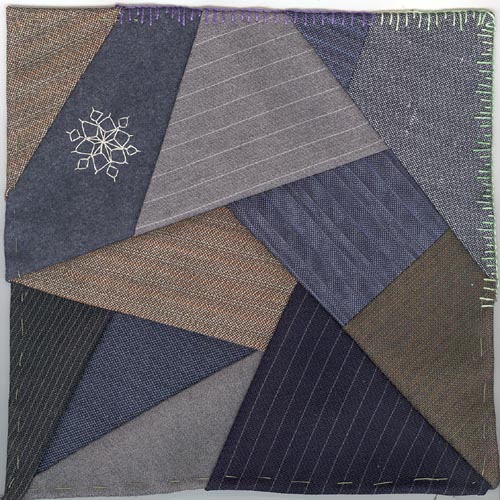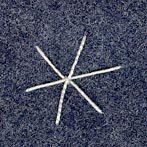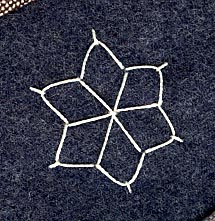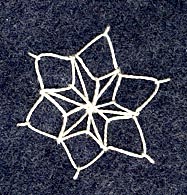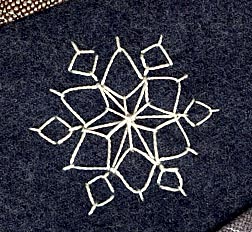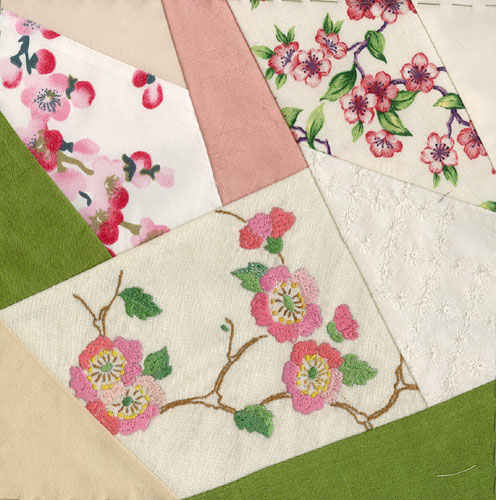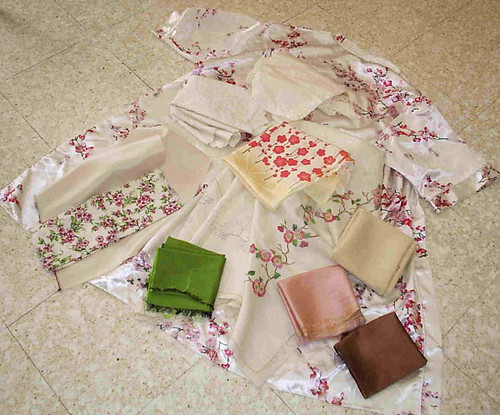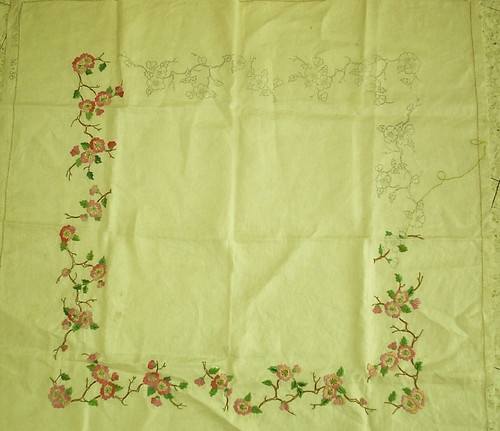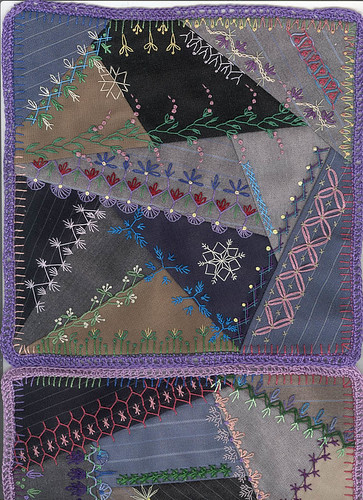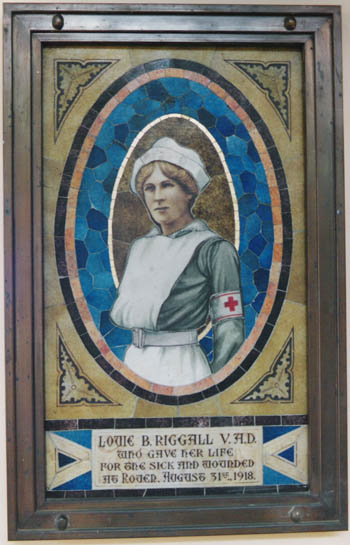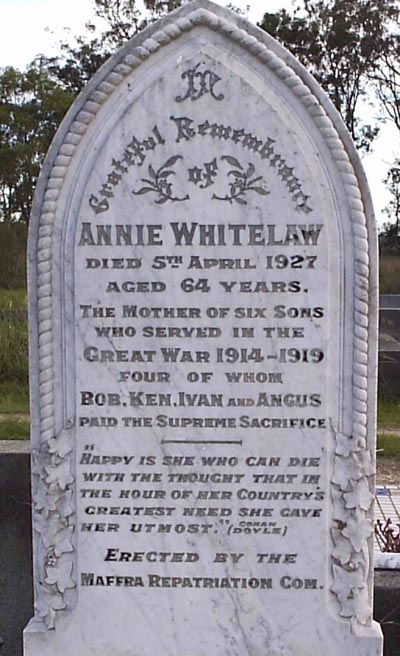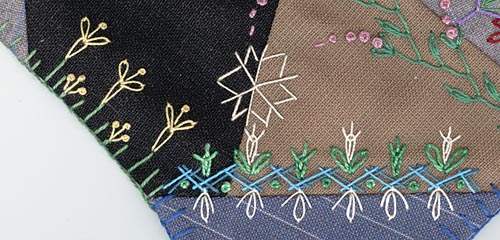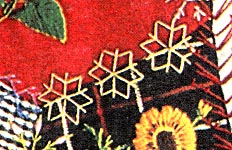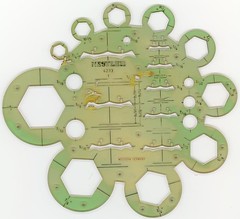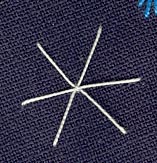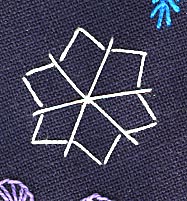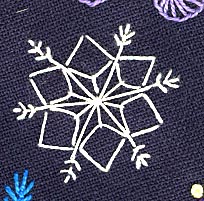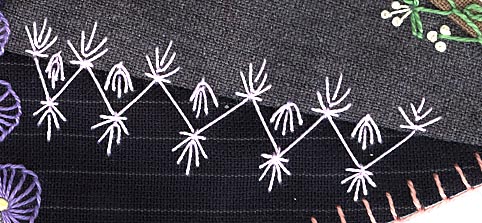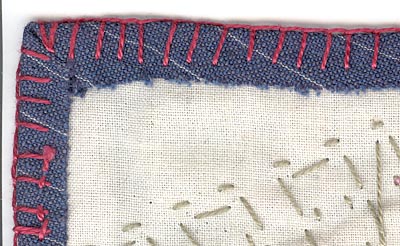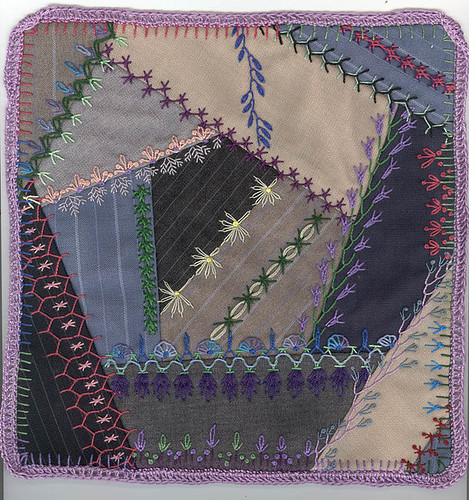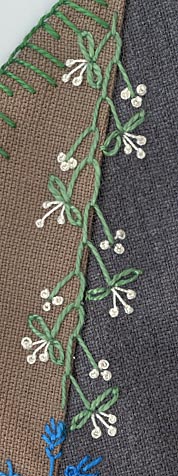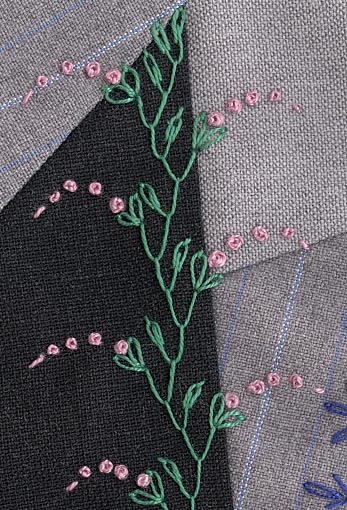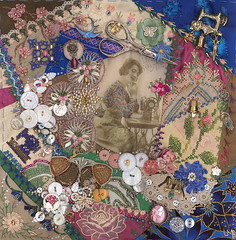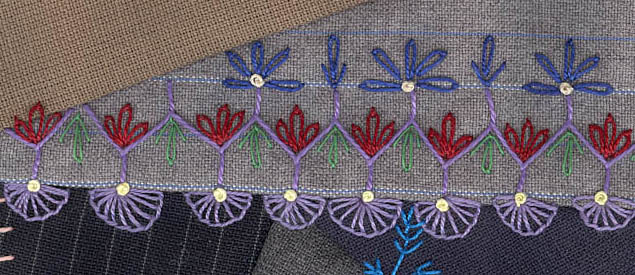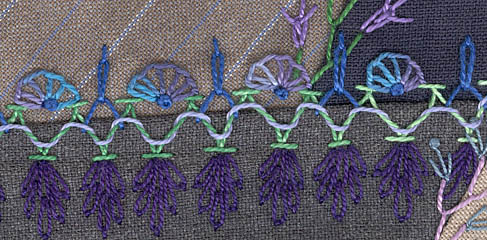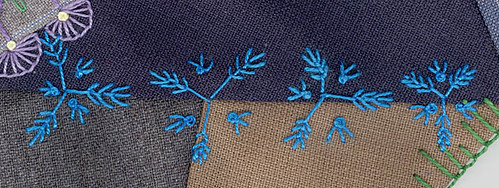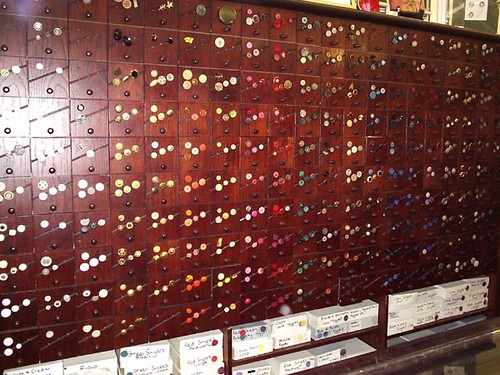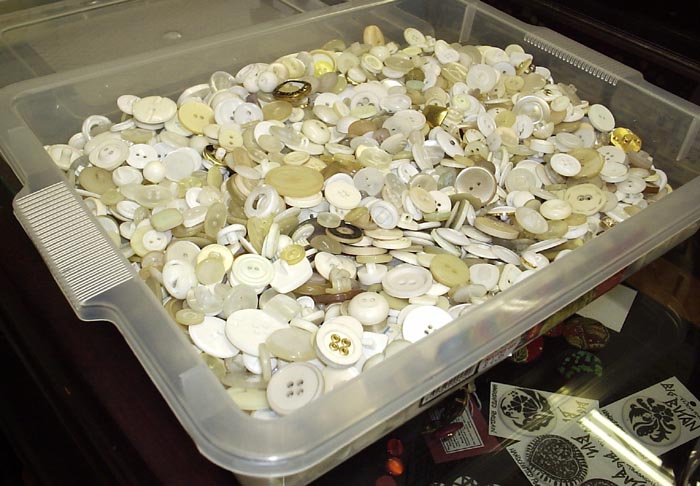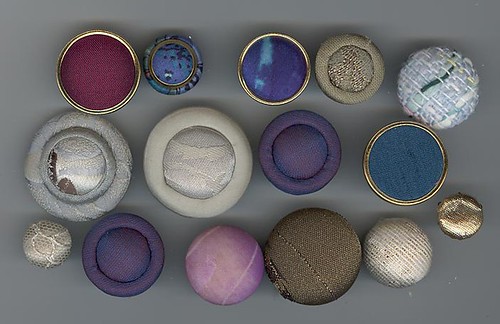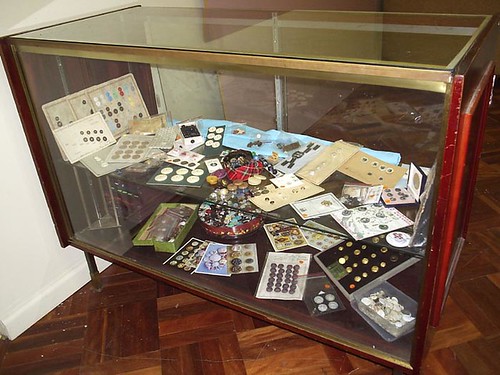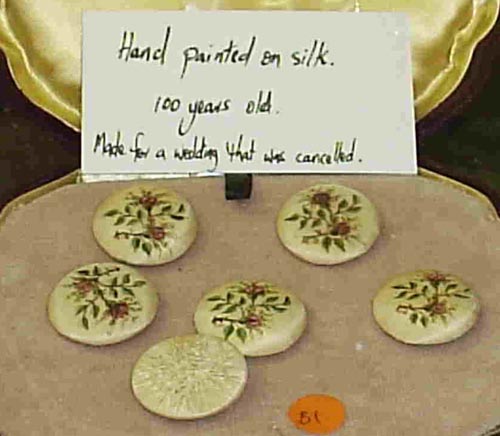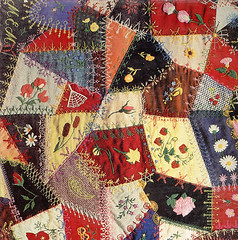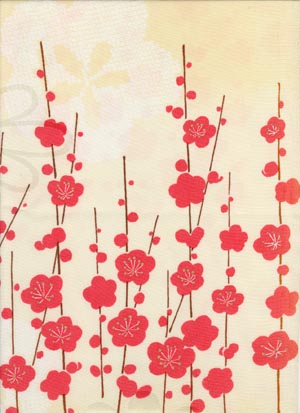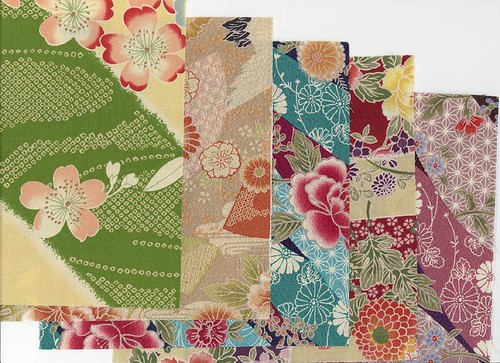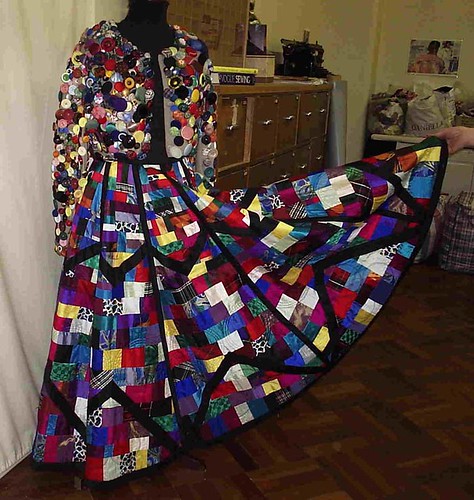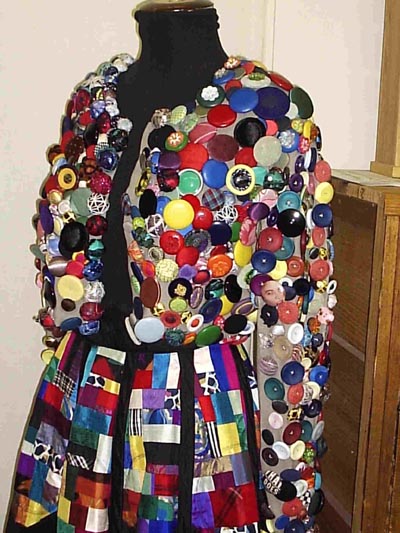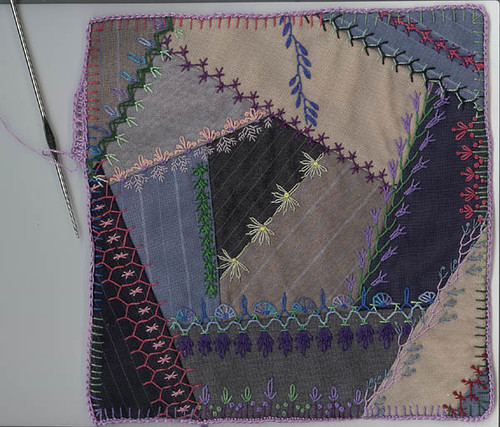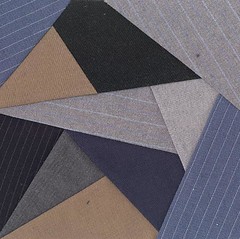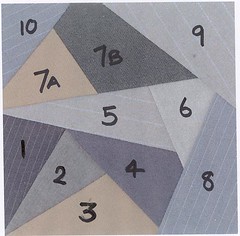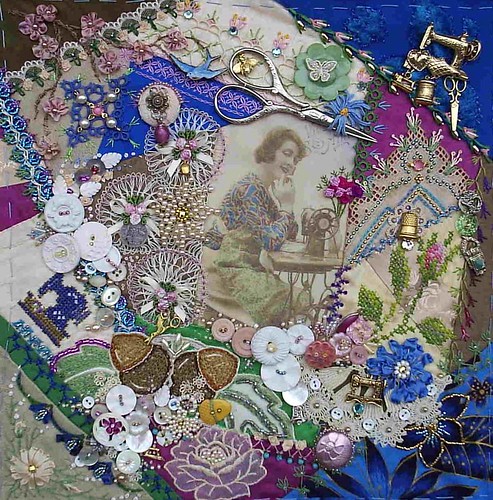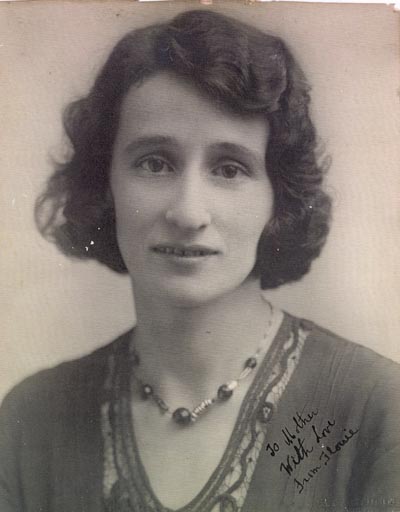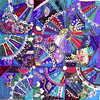This is a post that has been coming for a long time - the thinking things about my class block. What did it all mean? What did I learn?
Just as a reminder, this is the block:
and all stages of creation can be seen
HERE. I have just watched it as a slide show (blue link top right) and that is fun.
The block is a twelve inch one, and right now is extremely heavy. I think I will have to have it professionally framed, under glass.
Some of these points I talked about as I was making it, but I thought I would bring them all in again, in the one place. (In passing, I am working on copying and saving my whole blog, just in case. Will write about that soon).
When I started, I wasn't going to make this block at all - I was going for rusts and olives (remember the tomato sauce on the kitchen bench?), but then I found this print, and decided it was finally time to make the "Homage to my Sewing Machine" block I had been thinking about for years.
The print is one saved from the net, found via
Meggiecat. There are more out there in
that series. After looking at it for a long time, I think it is a hand-coloured sepia print. So that gave me the colours.
I decided that I wanted to add sections from doilies as I pieced, so there are four: the half a Hairpin lace doiley behind the woman, the whitework one of acorns below her, the crochet piece below the rose and the corner above the rose.
After that I proceeded along through the class process - seams and embellishments, button clusters etc. From fairly early on I knew I wanted to add a pair of scissors that had belonged to my later mother-in-law - she died aged 92 last December, and had sewed all her life. Before her marriage she was a sample-maker in the garment trade - not the fastest at the machine, but the best. I couldn't find the tiny pair of scissors I wanted, so chose the next best. They beautifully framed the figure in the centre.
Some time during this process I added my trade-marks - tatting, waste-canvas-work (rose and machine) and chicken scratch (the pink on the blue behind the scissors). The block was getting pretty full when I remembered bead flowers - so one is in the centre of the hairpin lace doiley, the other in a button cluster.
It was then, and only then, that I realised just how much the woman at the machine looked like my m-i-l (her name is Flo), would have looked at that age. This is a photograph of her in the early 1930s.
Finally, having decided that the block had intended to be about Flo all along, I went looking for a threepence from her year of birth - 1913. Only to discover that none were minted that year - nor were sixpences. So I settled on one from 1914, which is in the Hairpin Lace doiley - and that was the block finished.
And I still haven't signed it.
So, what have I learned in the class?
I am better at colour theory, and ready to take more risks with it. I think I am planning better, but will still change plans as the block develops. And I know that if I concentrate, with a realistic deadline, that I produce a better result. The stronger focus from the class really shows in this block, which is, I think, the best piece I have done.
The technical bits? Use more French Knots. Go and make myself deal with Bullions (I haven't yet). And go make samplers - more on that soon.
(And, having said that posts will be sparse in the next few days, I now have a few lined up. Then it will get busy again. Explain soon - but it includes things like snakebone necklaces and old sewing machines and dressmaker's shops ...... )
